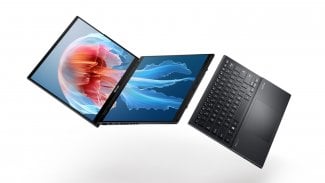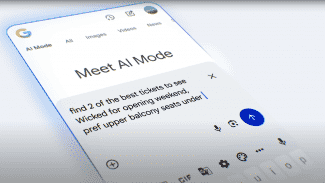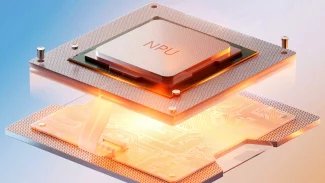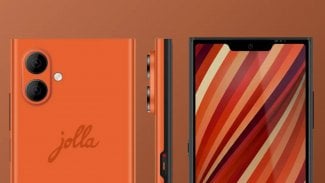mkelf-linux.1.gz
MKNBI
NAME
mknbi - make network bootable image
SYNOPSIS
mknbi --version
mknbi --format=format --target=target [--output=outputfile] target-specific-arguments
mkelf-linux [--output=outputfile] kernelimage [ramdisk]
mknbi-linux [--output=outputfile] kernelimage [ramdisk]
mknbi-rom [--output=outputfile] .z?rom-file
mkelf-img [--output=outputfile] .z?img-file
mkelf-menu [--output=outputfile] [dataimage]
mknbi-menu [--output=outputfile] [dataimage]
mkelf-nfl [--output=outputfile] [dataimage]
mknbi-nfl [--output=outputfile] [dataimage]
mkelf-lua [--output=outputfile] luabin
mknbi-fdos [--output=outputfile] kernel.sys floppyimage
mknbi-dos [--output=outputfile] floppyimage
DESCRIPTION
mknbi is a program that makes network bootable images for various
operating systems suitable for network loading by Etherboot or Netboot,
which are \s-1ROM\s0 boot loaders. If you are looking to boot using \s-1PXE\s0, look
no further, mknbi is not what you want. You probably want something like
\s-1PXELINUX\s0 which is part of the \s-1SYSLINUX\s0 package.
mknbi --version prints the current version. Use this before reporting
problems.
mknbi can be invoked with the --format and --target options or
links can be made to it under format and target specific names. E.g.
mkelf-linux is the same as mknbi --format=elf --target=linux.
--format=format Specify the format of the output. Currently
available are nbi and elf. \s-1ELF\s0 format only works with linux and menu.
Otherwise the invocation is the same as for mknbi. In discussions below,
the mknbi form is used.
--target=target Specify the target binary. Currently available are
linux, menu, rom, fdos and dos. mknbi is not needed for booting
FreeBSD.
--output=outputfile Specify the output file, can be used with
all variants. Stdout is the default.
The package must be installed in the destination location before the
executables can be run, because it looks for library files.
Each of the variants will be described separately.
MKELF-LINUX
mkelf-linux and mknbi-linux makes a boot image from a Linux kernel
image, either a zImage or a bzImage.
MKELF-LINUX OPTIONS
--param=string Replace the default parameter string with the
specified one. This option overrides all the following options so you
should know what you are doing.
--append=string Appends the specified string to the existing
parameter string. This option operates after the other parameter options
have been evaluated.
--rootdir=rootdir Define name of directory to mount via \s-1NFS\s0 from
the boot server.
In the absence of this option, the default is to use the directory
CW/tftpboot/%s, with the %s representing the hostname or
IP-address of the booting system, depending on whether the hostname
attribute is present in the \s-1BOOTP/DHCP\s0 reply.
If CWrom is given, and if the \s-1BOOTP/DHCP\s0 server is able to handle the \s-1RFC\s0 1497
extensions, the value of the rootpath option is used as the root directory.
If the name given to the option starts with CW/dev/, the corresponding
device is used as the root device, and no \s-1NFS\s0 directory will be mounted.
--rootmode=CWro|rw Defines whether the root device will be mounted
read-only or read-write respectively. Without this parameter, the
default is CWrw.
--ip=string Define client and server \s-1IP\s0 addresses.
In the absence of this option no \s-1IP\s0 addresses are defined, and the
kernel will determine the \s-1IP\s0 addresses by itself, usually by using \s-1DHCP\s0,
\s-1BOOTP\s0 or \s-1RARP\s0. Note that the kernel's query is in addition to the
query made by the bootrom, and requires the \s-1IP:\s0 kernel level
autoconfiguration (\s-1CONFIG_IP_PNP\s0) feature to be included in the kernel.
Important note: In Linux kernels 2.2.x where x >= 18, and 2.4.x where x
>= 5, it is necessary to specify one of the enabling options in the
next paragraph to cause the \s-1IP\s0 autoconfiguration to be activated.
Unlike in previous kernels, \s-1IP\s0 autoconfiguration does not happen by
default. Also note that \s-1IP\s0 autoconfiguration and NFSroot are likely to
go away in Linux 2.6 and that userspace \s-1IP\s0 configuration methods using
ramdisk and userspace \s-1DHCP\s0 daemons are preferred now.
If one of the following: CWoff, none, on, any, dhcp, bootp, rarp, both,
is given, then the option will be passed unmodified to the kernel and
cause that autoconfig option to be chosen.
If CWrom is given as the argument to this option, all necessary \s-1IP\s0
addresses for \s-1NFS\s0 root mounting will be inherited from the \s-1BOOTP/DHCP\s0
answer the bootrom got from the server.
It's also possible to define the addresses during compilation of the boot
image. Then, all addresses must be separated by a colon, and ordered in
the following way:
CW--ip=client:server:gateway:netmask:hostname[:dev[:proto]]
Using this option mkelf-linux will automatically convert system names
into decimal \s-1IP\s0 addresses for the first three entries in this string.
The hostname entry will be used by the kernel to set the host name of
the booted Linux diskless client. When more than one network interface
is installed in the diskless client, it is possible to specify the name
of the interface to use for mounting the root directory via \s-1NFS\s0 by
giving the optional value CWdev. This entry has to start with the
string CWeth followed by a number from 0 to 9. However, if only one
interface is installed in the client, this dev entry including the
preceding semicolon can be left out. The proto argument is one of the
\s-1IP\s0 autoconfiguration enabling options listed above. (Author: it's not
clear to me what the \s-1IP\s0 autoconfiguration does when the parameters are
already specified. Perhaps it's to obtain parameters not specified,
e.g. \s-1NIS\s0 domain.)
--rdbase=top|asis|0xNNNNNNNN Set the ramdisk load address. CWtop
moves the ramdisk to the top of memory before jumping to the kernel.
This is the default if rdbase is not specified. This option requires
that first-linux's kernel sizing work correctly. CWasis loads it at
0x100000 (1MB) if the kernel is loaded low; or leaves it just after the
kernel in memory, if the kernel is loaded high. For this option to work,
the kernel must be able to handle ramdisks at these addresses.
0xNNNNNNNN moves the ramdisk to the hex address specified. The onus
is on the user to specify a suitable address that is acceptable to the
kernel and doesn't overlap with any other segments. Etherboot will round
address down to multiple of 4k (last 3 digits to zero).
--rdnopad By default, etherboot pads (with nulls) the given initrd of
any size to multiple of 4k bytes (aligning to memory page boundary). Use
this option to disable padding if it causes problem.
--first32=program Override the default first stage setup
program. It can be used to call extensions to the Etherboot code, which
paves the way for additional useful functionality without enlarging the
size of the Etherboot footprint. --first32 is implied by the \s-1ELF\s0
format.
--progreturns This option is used in conjunction with and only valid
with the --first32 option to indicate to the Etherboot loader that the
called program will return to loader and hence Etherboot should not
disable the network device as is the case when the program will never
return to Etherboot.
--relocseg=segaddr This option is used to specify a relocation of
the Linux first, boot, setup, and parameter segments to another 64k
band. Currently the only valid values are 0x9000 and 0x8000,
corresponding to linear addresses of 0x90000 and 0x80000 upwards. The
default is 0x9000. Usually you use this option if you have relocated
Etherboot to 0x84000 to avoid other code in the 0x90000 segment like
\s-1DOC\s0. The Linux kernel must support relocation which implies a 2.4 kernel
or later. --relocseg only works reliably with \s-1ELF\s0 or --first32=.
mem=memsize This is not a command line option but a kernel
parameter that is intercepted by the first32 stage and used as the top
of memory, to match Linux's interpretation. memsize can be suffixed
by CWG to indicate gibibytes (times 2^30), CWM to indicate mebibytes
(times 2^20) or CWK to indicate kibibytes (times 2^10). Note that the
suffixes are uppercase. This kernel parameter can be specified in
--append= or option-129 of the \s-1DHCP/BOOTP\s0 record.
Run the program thus:
mkelf-linux kernel-image [ramdisk-image] > linux.nb
Then move linux.nb to where the network booting process expects to
find it.
MKELF-LINUX BOOTP/DHCP VENDOR TAGS
mkelf-linux includes a startup code at the beginning of the Linux
kernel which is able to detect certain \s-1DHCP\s0 vendor defined options.
These can be used to modify the kernel loading process at runtime. To
use these options with \s-1ISC\s0 \s-1DHCPD\s0 v3, a popular \s-1DHCP\s0 daemon, the syntax
is as below. You will need to adjust the syntax for other \s-1DHCP\s0 or \s-1BOOTP\s0
daemons.
option etherboot-signature code 128 = string;
option kernel-parameters code 129 = text;
...
option etherboot-signature E4:45:74:68:00:00;
option kernel-parameters "INITRD_DBG=6 NIC=3c509";
Option 128 is required to be the six byte signature above. See the
vendortags appendix of the Etherboot user manual for details.
The following option is presently supported by mkelf-linux:
129 The string value given with this option is appended verbatim to
the end of the kernel command line. It can be used to specify arguments
like I/O addresses or \s-1DMA\s0 channels required for special hardware
like \s-1SCSI\s0 adapters, network cards etc. Please consult the Linux kernel
documentation about the syntax required by those options. It is the same
as the --append command line option to mkelf-linux, but works at
boot time instead of image build time.
130 With this option it is possible to the select the network adapter
used for mounting root via \s-1NFS\s0 on a multihomed diskless client. The
syntax for the string value is the same as for the CWdev entry used
with the --ip= option as described above. However note that the
mkelf-linux runtime setup routine does not check the syntax of the
string.
MKNBI-ROM
mknbi-rom makes a boot image from an Etherboot CW.rom or CW.zrom
boot \s-1ROM\s0 image. This allows it to be netbooted using an existing
\s-1ROM\s0. This is useful for developing Etherboot drivers or to load a newer
version of Etherboot with an older one.
Run mknbi-rom like this:
mknbi-rom nic.zrom > nic.nb
Move nic.nb to where the network booting process expects to find it.
The boot \s-1ROM\s0 will load this as the operating system and execute the
\s-1ROM\s0 image.
MKELF-IMG
mkelf-img makes a boot image from an Etherboot CW.img or CW.zimg
image. This allows it to be netbooted using an existing \s-1ROM\s0. This is
useful for developing Etherboot drivers or to load a newer version of
Etherboot with an older one.
Run mkelf-img like this:
mkelf-img nic.zimg > nic.nb
Move nic.nb to where the network booting process expects to find it.
The boot \s-1ROM\s0 will load this as the operating system and execute the
image.
Note that this does not test the \s-1ROM\s0 loader portion that's in a CW.z?rom
image, but not in a CW.z?img.
MKELF-MENU
mkelf-menu and mknbi-menu make a boot image from an auxiliary menu
program. Etherboot has the ability to load an auxiliary program which
can interact with the user, modify the \s-1DHCP\s0 structure, and return a
status. Based on the status, Etherboot can load another binary, restart
or exit. This makes it possible to have elaborate user interface
programs without having to modify Etherboot. The specification for
auxiliary program is documented in the Etherboot Developer's Manual.
mkelf-menu and mknbi-menu take a binary named CWmenu from the
library directory, which is assumed to have an entry point of 0x60000.
An optional argument is accepted, and this is loaded at 0x80000. This
can be a data file used by the menu program.
Currently, the menu binary provided duplicates the builtin menu facility
of Etherboot with the exception of a couple of small differences: no
server or gateway specifications are used and nested \s-1TFTP\s0 loads don't
work. You should not have \s-1MOTD\s0 or \s-1IMAGE_MENU\s0 defined in your Etherboot
build to be able to use this external menu binary. The specifications of
the \s-1DHCP\s0 option required is in the vendortags document in the Etherboot
user manual.
Typical usage is like this:
mkelf-menu > menu.nb
Then put menu.nb in the \s-1TFTP\s0 boot directory and edit your \s-1DHCP\s0 options
according to the documentation.
Alternate user interface programs are highly encouraged.
MKELF-NFL
mkelf-nfl and mknbi-nfl make a boot image from the \s-1NFL\s0 menu
program. This menu program takes the names of images from a
menu-text-file file which just contains lines with the filenames
(relative to the tftpd root directory) of images to load. The
user-interface is a light-bar, similar to that used in \s-1GRUB\s0. There is a
sample menu-text-file in CWmenu-nfl.eg. The special entry “Quit
Etherboot” (without quotes, of course) can be used in menu-text-files
as an entry that causes Etherboot to quit and return to the invoking
environment, which is the \s-1BIOS\s0 in the case of ROMs.
Typical usage is:
mkelf-nfl menu-text-file > nfl.nb
Then put nfl.nb in the \s-1TFTP\s0 boot directory and specify as the boot
image. Chaining to other menus works.
Enhancements to the menu format accepted to specify other features such
as titles, timeout, colours, and so forth are highly encouraged.
MKELF-LUA
mkelf-lua makes an \s-1ELF\s0 image from a precompiled Lua
Typical usage is:
mkelf-lua hello.lb > luaprog.nb
where CWhello.lb was generated from a Lua program by:
luac -o hello.lb hello.lua
The functions available to Lua programs in this environment is described
in a separate document.
MKNBI-FDOS
mknbi-fdos makes a boot image from a FreeDOS kernel file and a floppy
image. Note that the kernel image is not read from the floppy section
of the boot image, but is a separate section in the boot image. The
bootloader has been adjusted to jump to it directly. This means the
space that would be taken up on the floppy by the kernel image file
can now be used for applications and data.
Obtain a distribution of FreeDOS with a recent kernel, probably at least
2006. It has been tested with 2012 but nothing older. You can get the
FreeDOS kernel here:
CWhttp://freedos.sourceforge.net/
Follow the instructions to make a bootable floppy. Then get an image
of the floppy with:
dd if=/dev/fd0 of=/tmp/floppyimage
Also extract kernel.sys from the floppy. You can do this from the
image using the mtools package, by specifying a file as a drive
with a declaration like this in ~/.mtoolsrc:
drive x: file=“/tmp/floppyimage”
Then run:
mcopy x:kernel.sys .
Then run mknbi by:
mknbi-fdos kernel.sys /tmp/floppyimage > freedos.nb
where kernel.sys and /tmp/floppyimage are the files extracted above.
Then move freedos.nb to where the network booting process expects to
find it.
If you have got it to netboot successfully, then you can go back and
add your files to the floppy image. You can delete kernel.sys in
the floppy image to save space, that is not needed. Note that you can
create a floppy image of any size you desire with the mformat program
from mtools, you are not restricted to the actual size of the boot floppy.
MKNBI-FDOS OPTIONS
--harddisk Make the boot ramdisk the first hard disk, i.e. C:. One
reason you might want to do this is because you want to use the real
floppy. The limit on “disk size” in the boot image is not raised by this
option so that is not a reason to use this option. This option is
incompatible with --disableharddisk.
--disableharddisk When the ramdisk is simulating a floppy disk drive,
this switch will disable hard disk accesses. This is necessary if the
client should use a network file system as drive C:, which is only
possible if there are no hard disks found by \s-1DOS\s0. This option is
incompatible with --harddisk.
--nosquash Do not try to chop unused sectors from the end of the
floppy image. This increases the boot image size and hence loading
time if the \s-1FAT\s0 filesystem on the floppy is mostly empty but you may
wish to use this option if you have doubts as to whether the squashing
algorithm is working correctly.
--rdbase=0xNNNNNNNN Set the ramdisk load address. The default
load address for the ramdisk is 0x110000. It can be moved higher
(lower will not work) if for some reason you need to load other stuff
at the address it currently occupies. As this is a linear address and
not a segment address, the last 4 bits are not used and should be 0.
MKNBI-DOS
mknbi-dos makes a boot image from a floppy image containing a
bootable \s-1DOS\s0 filesystem. It is not necessary to build the filesystem on
a physical floppy if you have the mtools package, but you need a
bootable floppy of any size to start with. First extract the boot block
from the floppy, this boot block must match the \s-1DOS\s0 kernel files you
will copy in the next step:
dd if=/dev/fd0 of=bootblock bs=512 count=1
Then get the \s-1DOS\s0 kernel files (this is correct for \s-1DR-DOS\s0, the names
are different in \s-1MS-DOS\s0, \s-1IO\s0.SYS and \s-1MSDOS\s0.SYS):
mcopy a:IBMBIO.COM a:IBMDOS.COM a:COMMAND.COM .
Next make an entry in ~/.mtoolsrc to declare a floppy to be mapped
to a file:
drive x: file=“/tmp/floppyimage”
Now format a floppy of the desired size, in this example a 2.88 \s-1MB\s0 floppy,
at the same time writing the bootblock onto it:
mformat -C -t 80 -s 36 -h 2 -B bootblock x:
The size of the “floppy” is only limited by the limits on the number of
cylinders, sectors and heads, which are 1023, 63 and 255 respectively,
and the amount of \s-1RAM\s0 you are willing to allocate to the “floppy” in
memory. As \s-1RAM\s0 is precious, choose a size slightly bigger than what is
needed to hold your “floppy” files.
Finally, copy all your desired files onto the floppy:
mcopy \s-1IBMBIO\s0.COM x:
mcopy \s-1IBMDOS\s0.COM x:
mcopy \s-1COMMAND\s0.COM x:
mcopy \s-1CONFIG\s0.SYS \s-1AUTOEXEC\s0.BAT \s-1APP\s0.EXE \s-1APP\s0.DAT ... x:
For MS-DOS substitute \s-1IO\s0.SYS for \s-1IBMIO\s0.COM, and \s-1MSDOS\s0.SYS for
\s-1IBMDOS\s0.COM. The case of the files must be preserved, it may not work if
\s-1VFAT\s0 lower case names are generated in the floppy image. Pay attention
to the order of copying as the boot block may expect the first two
entries on a newly formatted disk to be \s-1IO\s0.SYS, \s-1MSDOS\s0.SYS. Possibly too
\s-1COMMAND\s0.COM has to be the third entry so we play safe. Thanks to Phil
Davey and Phillip Roa for these tips.
I have reports that the bootblock of MS-DOS 6.22 sometimes fails to boot
the ramdisk. You could try using the boot block from Netboot instead of
getting the boot block off the floppy. I have provided this boot block
in the distribution as altboot.bin, and in source form as altboot.S and
boot.inc. One essential thing is to make \s-1IO\s0.SYS the first file on the
disk, or this bootblock will not work.
If you happen to have a media of the same size you could test if the
image is bootable by copying it onto the media, and then booting it:
dd if=/tmp/floppyimage of=/dev/fd0
Then run mknbi-dos over the image /tmp/floppyimage to create a
boot image:
mknbi-dos /tmp/floppyimage > dos.nb
Move dos.nb to where the network booting process expects to find it.
MKNBI-DOS OPTIONS
--harddisk Make the boot ramdisk the first hard disk, i.e. C:. One
reason you might want to do this is because you want to use the real
floppy. The limit on “disk size” in the boot image is not raised by this
option so that is not a reason to use this option. This option is
incompatible with --disableharddisk.
--disableharddisk When the ramdisk is simulating a floppy disk drive,
this switch will disable hard disk accesses. This is necessary if the
client should use a network file system as drive C:, which is only
possible if there are no hard disks found by \s-1DOS\s0. This option is
incompatible with --harddisk.
--nosquash Do not try to chop unused sectors from the end of the
floppy image. This increases the boot image size and hence loading
time if the \s-1FAT\s0 filesystem on the floppy is mostly empty but you may
wish to use this option if you have doubts as to whether the squashing
algorithm is working correctly.
--rdbase=0xNNNNNNNN Set the ramdisk load address. The default
load address for the ramdisk is 0x110000. It can be moved higher
(lower will not work) if for some reason you need to load other stuff
at the address it currently occupies. As this is a linear address and
not a segment address, the last 4 bits are not used and should be 0.
BUGS
Please report all bugs to Etherboot users mailing list:
<https://sourceforge.net/mail/?group_id=4233>
SEE ALSO
Etherboot tutorial at CWhttp://etherboot.sourceforge.net/ Mtools package
is at CWhttp://wauug.erols.com/pub/knaff/mtools/ Make sure you have a
recent version, the ability to map a drive to a file is not present in
old versions.
COPYRIGHT
mknbi is under the \s-1GNU\s0 Public License
AUTHOR
Ken Yap
mk{elf,nbi}-nfl was contributed by Robb Main of Genedyne.
DATE
See man page footer for date and version. Sorry, not available in the
\s-1HTML\s0 version.



















